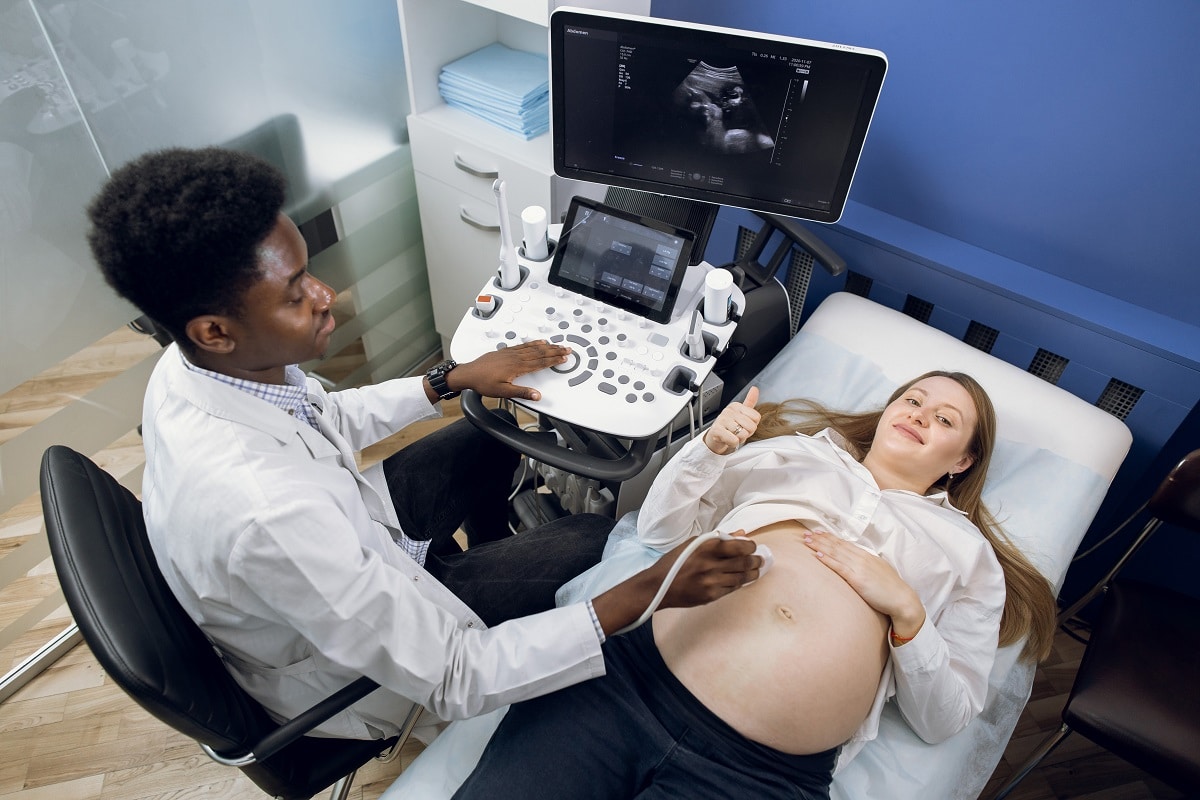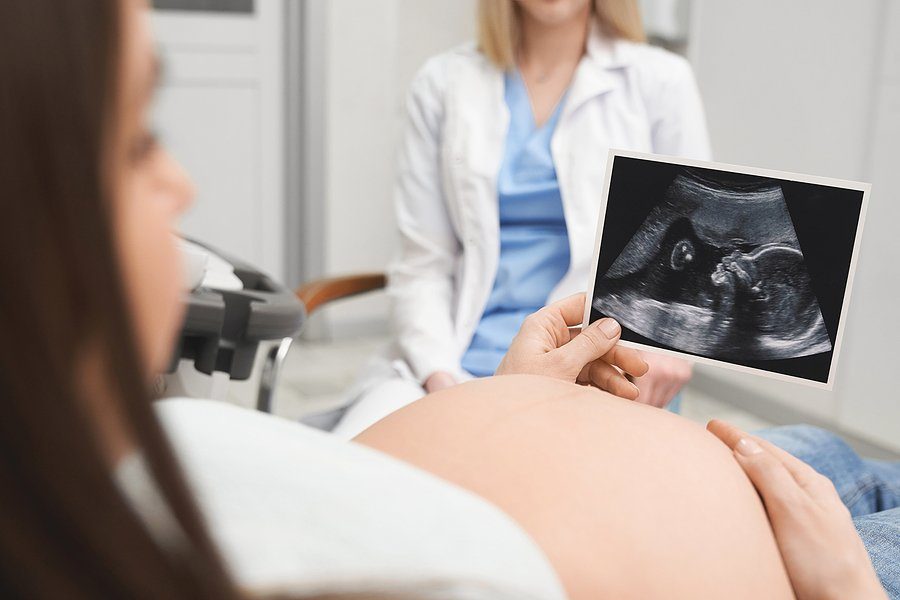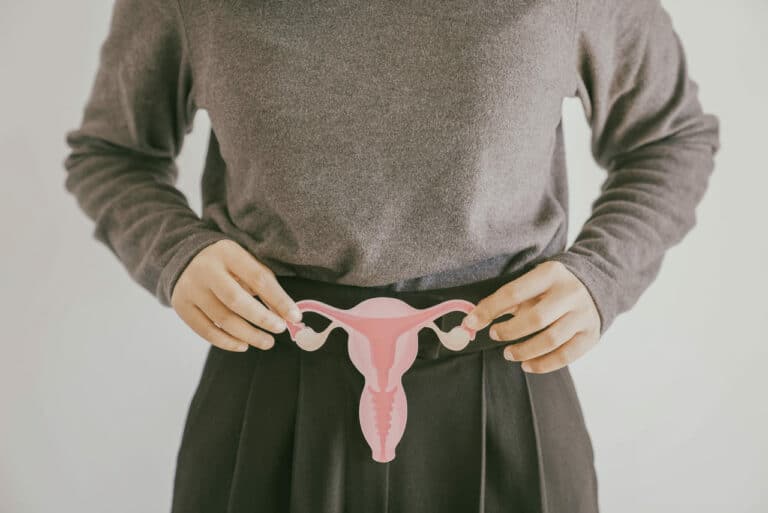Ultrasounds have become a common part of pregnancy. Many women have 3-4 ultrasounds during pregnancy. It generally depends on how your pregnancy is progressing and how your health affects it. But how many ultrasounds are actually necessary? And what are the costs associated with having ultrasounds? Read on to find out more.
Ultrasounds in pregnancy are medical scans that use high-frequency sound waves to create images of the developing baby. They are also known as sonograms. Ultrasounds can be performed at any stage of pregnancy, but they are most commonly done between weeks 8 and 12. During this time, an ultrasound can help to accurately date the pregnancy and assess your baby’s growth.
For your baby, ultrasounds are usually performed by trained professionals using special equipment. However, it is important to remember that ultrasounds are a medical procedure and should only be carried out when medically indicated. The high-frequency sound waves of an ultrasound tell you how your baby is developing, but they can also be harmful if used improperly. The number of ultrasounds during pregnancy will depend on several factors, including the stage of pregnancy and the reason for the ultrasound. In this post, we will discuss how many ultrasounds are typically done during pregnancy and when they are recommended.
In This Article
How many ultrasounds are done in a pregnancy?
In pregnancy, an ultrasound scan can be used to look at the baby, placenta, and umbilical cord. A woman may have two or more scans during pregnancy, depending on her health and how far along she is in her pregnancy. However, some women may need more than three scans if there are concerns about the health of the baby or the mother. Below we’ve described weeks by weeks pregnancy ultrasound test (1) and they are:
By 6–8 Weeks ( Early pregnancy Ultrasound):
During this week of pregnancy, an ultrasound has done to check your baby’s heartbeat. This is the earliest that you can see a heartbeat on ultrasound. The average heartbeat at six weeks is 90 to 110 beats per minute.
At 8-9 Weeks (Dating scan):
This ultrasound scan will help determine how far along in your pregnancy you are and give you an estimated due date. The clear images generated help the physician determine if your baby is developing normally. The dating scan will tell you the date that you are due to have your baby.
At 12 Weeks (Nuchal Translucency Scan):
Between 11 weeks and 13 weeks plus six days, a nuchal translucency scan can be used to screen for Down syndrome. This is also called the NT scan. During this scan, an ultrasound is used to measure the clear (fluid-filled) space in the tissue at the back of your baby’s neck.
At 20 Weeks (Anatomy scan):
An anatomy scan is usually done between 18 weeks and 20 weeks plus six days of pregnancy. This ultrasound scan checks for major birth defects within your baby. The physician will look at your baby’s brain, heart, spine, kidneys, and other organs. You will be able to see your baby moving and hear the heartbeat.
Additionally, to know the positions of your baby scans must be done. If your baby is in the breech position, or lying bottom-down instead of head-down, they may recommend a scan at 36 weeks to check that the baby has moved into the right position for birth. You should discuss with your doctor how many scans you need and what they will be looking for before having an ultrasound scan.

What are the types of ultrasounds in pregnancy?
There is a common misconception that there is only one type of ultrasound. The fact of your baby’s development may be checked through several types of ultrasound in pregnancy. Ultrasounds generally use sound waves to produce images of the baby in the womb. Moreover, a family history of certain genetic conditions has some expecting parents opt for genetic testing, which can be done through ultrasound as well. There are various types of ultrasounds in pregnancy, each with a different purpose:
Transvaginal Ultrasound: Also called an intrauterine ultrasound, this is usually the first type of ultrasound performed during pregnancy. It is generally done early on in pregnancy, between weeks six and twelve, to confirm the baby’s gestational sac location. During a transvaginal ultrasound, a small probe is inserted into the vagina to get a clear view of the baby.
Transabdominal Ultrasound: In this type of ultrasound, the probe is placed on the mother’s abdomen to create images of the baby. This is generally done later on in pregnancy, after about week twelve. In addition, this type of ultrasound can be used to check the baby’s position, placenta location, and amniotic fluid levels.
3D Ultrasound: 3D Ultrasound uses special cameras to create a three-dimensional image of the baby. This type of ultrasound is becoming increasingly popular, as it allows parents a better view of their child than ever before.
Doppler Ultrasound: This type of ultrasound uses sound waves to measure blood flow. It can be used to check for conditions such as heart defects or blood disorders. On the other side, the flow of blood can also be monitored in order to check for problems with the placenta or umbilical cord.
Fetal Echocardiography: Fetal echocardiography is a type of ultrasound that is used to examine the heart of the developing baby. This test can be used to look for congenital heart defects or other heart problems.
How many ultrasounds during pregnancy are safe?

It is generally safe to have two ultrasounds during the first and second trimesters of pregnancy. Some doctors may recommend more ultrasounds, especially if there are concerns about the health of the baby, but there is no evidence that more ultrasounds are necessarily better for the baby or mother.
On the other hand, too many ultrasounds can be a sign of health problems in pregnancy. A study published in the medical journal Ultrasound in Obstetrics & Gynecology found that exposure to ultrasound waves above the FDA’s intensity limit was associated with an increased risk of autism spectrum disorder.
The researchers concluded that “it is imperative to adhere to the FDA’s recommendations on the use of diagnostic ultrasound.”Although there are some risks associated with having too many ultrasounds. These risks include:
- Damage to the placenta: Repeated exposure to ultrasound waves can damage the placenta, which can lead to complications during pregnancy and delivery.
- Increased risk of autism: As well the sound waves from an ultrasound can disrupt the development of the central nervous system in the baby, which can lead to autism.
- Impaired fetal growth: When you have an ultrasound, the sound waves heat up the fluid in your body. This can lead to impaired fetal growth if you have too many ultrasounds during pregnancy.
- Preterm labor: A study published in the medical journal found that exposure to ultrasound waves during pregnancy was associated with an increased risk of preterm labor.
So while there are some risks associated with having too many ultrasounds, it is generally safe to have two during pregnancy. However, it is important to make sure that the ultrasound technician is following the FDA’s guidelines on intensity and duration.
How much do ultrasounds cost?
The cost of ultrasound can vary depending on the clinic or hospital where you have the procedure done. It also depends on your insurance coverage. A typical ultrasound costs anywhere from $200 to $1000. This amount may vary depending on the city or state of the mother. However, if you have insurance, your insurer may cover part or all of the cost. Generally, the price of having an ultrasound can vary dramatically depending on where you live and who is providing the service.
On the contrary, big hospitals with higher administrative costs may charge more for an ultrasound than a doctor’s office or independent clinic. This means no deductible, no reimbursement, no coinsurance, and no out-of-pocket costs for the insured beyond the premium. Some tests are mentioned in the legislation and subsequent guidance, including screening for gestational diabetes, however, there is no specific mention of radiology, which is the category that includes an ultrasound.
Additionally, it is important to remember that some states have mandated insurance coverage for certain types of ultrasounds. The costs of ultrasound procedures depend on many factors, so it’s advisable to speak with your doctor or midwife, as well as your insurance company, to get a better idea of what to expect.
What is the last scan in pregnancy?

The last scan in pregnancy is the anatomy scan. It’s also called the Level 2 ultrasound or fetal anatomy scan. It’s done between 18 and 22 weeks of pregnancy.
The purpose of the anatomy scan is to check for major physical abnormalities in the baby. The technician will look at the baby’s head, spine, heart, stomach, and kidneys. They will also measure the baby’s length, weight, and other body measurements.
Is it normal to have multiple ultrasounds during pregnancy?
No. It’s not normal to have multiple scans during pregnancy, and it can be a sign that something is wrong.
When there are concerns about the health of the baby or the mother, doctors may order additional ultrasounds to get a better understanding of what’s going on. But when there are no problems, it’s best to have as few ultrasounds as possible so that the baby isn’t exposed to too much radiation.
What weeks do you get ultrasounds during your pregnancy?
Generally, you can expect to have two ultrasounds during your pregnancy. The first ultrasound will usually take place when you are around 6-8 weeks pregnant. This ultrasound is often called the “dating” ultrasound because it can help to determine how far along you are in your pregnancy. The second ultrasound will usually take place between 18-20 weeks and is often called the “anatomy scan” because it can provide information about the baby’s anatomy and development.
However, it is important to note that not all women will have two scans during their pregnancy. Some women may only have one ultrasound, while others may have more than two. Ultimately, it is up to your healthcare provider to determine how many ultrasounds you may need during your pregnancy.
How many scans do you have in your third trimester?
You will likely have two ultrasound scans in your third trimester. The first scan, also called a Level 2 scan, is usually done between 18 and 22 weeks of pregnancy. This scan is used to check the baby’s development and look for any problems.
The second scan, also called a Level 3 or Growth scan, is usually done between 26 and 32 weeks of pregnancy. This scan checks the baby’s growth and position. It can also show how much amniotic fluid there is around the baby.
The Conclusion
As we said an ultrasound for you and your baby is considered to be very important. It is a non-invasive way to get information about your baby’s health and development. An ultrasound can help determine if your baby is the right size if the umbilical cord has enough fluid surrounding it and if there are any problems with the placenta or the amniotic fluid. Most women will have at least one ultrasound during their pregnancy, but some may have more if there are any concerns.
Some women choose to have an elective ultrasound for the sole purpose of finding out the sex of their baby. While this is generally considered to be safe, it’s important to remember that ultrasounds are a medical procedure and should only be performed when medically necessary. If you have any concerns about the number of ultrasounds you’re being offered or their purpose, be sure to speak with your healthcare provider. We hope the above information has been of help. Leave a comment below to let us know your thoughts. We wish you a happy and healthy pregnancy!











